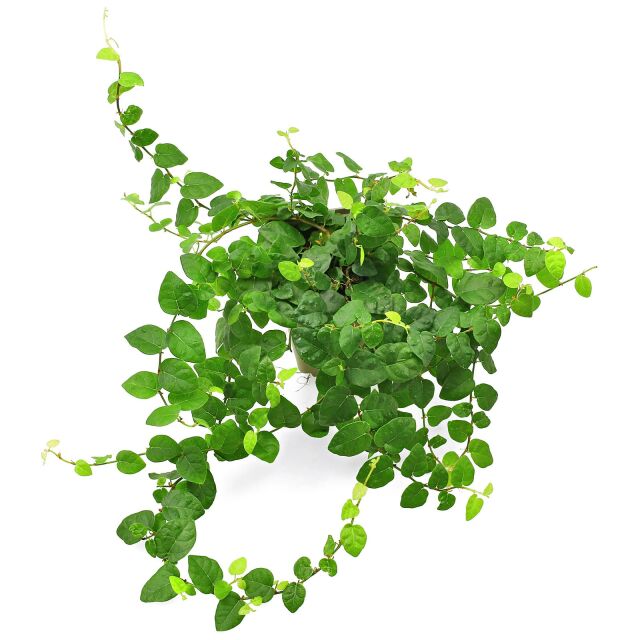GardenAquaria
Ficus pumila
Ficus pumila
Couldn't load pickup availability
Quite unlike other Ficus species, the Creeping fig covers objects with a dense mat. It attaches itself with its roots, just like ivy (Hedera). In Japan, eastern and southern China and Vietnam, this climbing shrub grows several metres high on trees and rocks. This creeping fig is popular as an indoor plant, and in areas without heavy frosts it can also be used as an outdoor climber. Under favourable conditions it forms an adult form with larger leaves on which the fruits develop, but as a houseplant and terrarium plant it usually remains in the juvenile form. The small heart-shaped leaves are reddish brown when they emerge and later medium to dark green. If the shoots cannot find a way to climb, they grow creeping on the ground.
Ficus pumila is easy to care for and fast-growing. It has no special requirements for the soil, which should only be loose and rich in nutrients. The climbing fig is only sensitive to drying out and should be watered regularly. However, waterlogging should be avoided. Direct the shoots to objects where they are to climb or tie them to them. The roots can only attach themselves badly to very smooth surfaces. The light requirement is moderate, strong lighting or a sunny position in daylight culture is also tolerated. This subtropical plant can be overwintered cold but frost-free or kept at tropical temperatures above 20 °C all year round.
This versatile, small-leaved climber is an ideal plant for terrascaping. Like ivy, the Creeping fig covers branches, trunks, rocks and walls, but can also be used as ground cover. It can be reduced and shaped easily by pruning. Although Ficus pumila is primarily a plant of subtropical humid forests that tolerates low temperatures and dry air, it is also suitable for tropical rainforest conditions.
*Pictures are not the actual plants you will receive, but a sample representation.
Share


